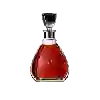
Winery Coume del MasHors d'Age Banyuls
This wine generally goes well with beef and mature and hard cheese.
The Hors d'Age Banyuls of the Winery Coume del Mas is in the top 10 of wines of Banyuls.
Wine flavors and olphactive analysis
On the nose the Hors d'Age Banyuls of Winery Coume del Mas in the region of Languedoc-Roussillon often reveals types of flavors of oak.
Food and wine pairings with Hors d'Age Banyuls
Pairings that work perfectly with Hors d'Age Banyuls
Original food and wine pairings with Hors d'Age Banyuls
The Hors d'Age Banyuls of Winery Coume del Mas matches generally quite well with dishes of beef or mature and hard cheese such as recipes of fricandeaux german style or real savoyard fondue.
Details and technical informations about Winery Coume del Mas's Hors d'Age Banyuls.
Discover the grape variety: Loureiro
Most certainly Portuguese. Loureiro is part of the grape varieties of many Spanish and Portuguese appellations, including the famous Vinho Verde. It would be a close relative of the albarino and the sousão.
Informations about the Winery Coume del Mas
The Winery Coume del Mas is one of of the world's greatest estates. It offers 16 wines for sale in the of Banyuls to come and discover on site or to buy online.
The wine region of Banyuls
Banyuls wines come from the South-eastern Part of Roussillon, in the south of France, in the lower Pyrenees, a few kilometres from the Spanish border. These naturally Sweet wines are consumed both as an aperitif and as a dessert. They come in a wide range of hues, from GoldenGreen (Banyuls Blanc) to Amber (Banyuls Ambré) to the intense garnet of the standard Banyuls Rouge. Unusually among the natural sweet wines of France, all Banyuls wines are made primarily from Grenache grapes of various colors.
The wine region of Languedoc-Roussillon
Languedoc (formerly Coteaux du Languedoc) is a key appellation used in the Languedoc-Roussillon wine region of southern France. It covers Dry table wines of all three colors (red, white and rosé) from the entire region, but leaves Sweet and Sparkling wines to other more specialized appellations. About 75% of all Languedoc wines are red, with the remaining 25% split roughly down the middle between whites and rosés. The appellation covers most of the Languedoc region and almost a third of all the vineyards in France.
The word of the wine: Primary (aromas)
Aromas characteristic of each grape variety, essentially fruity and floral.














